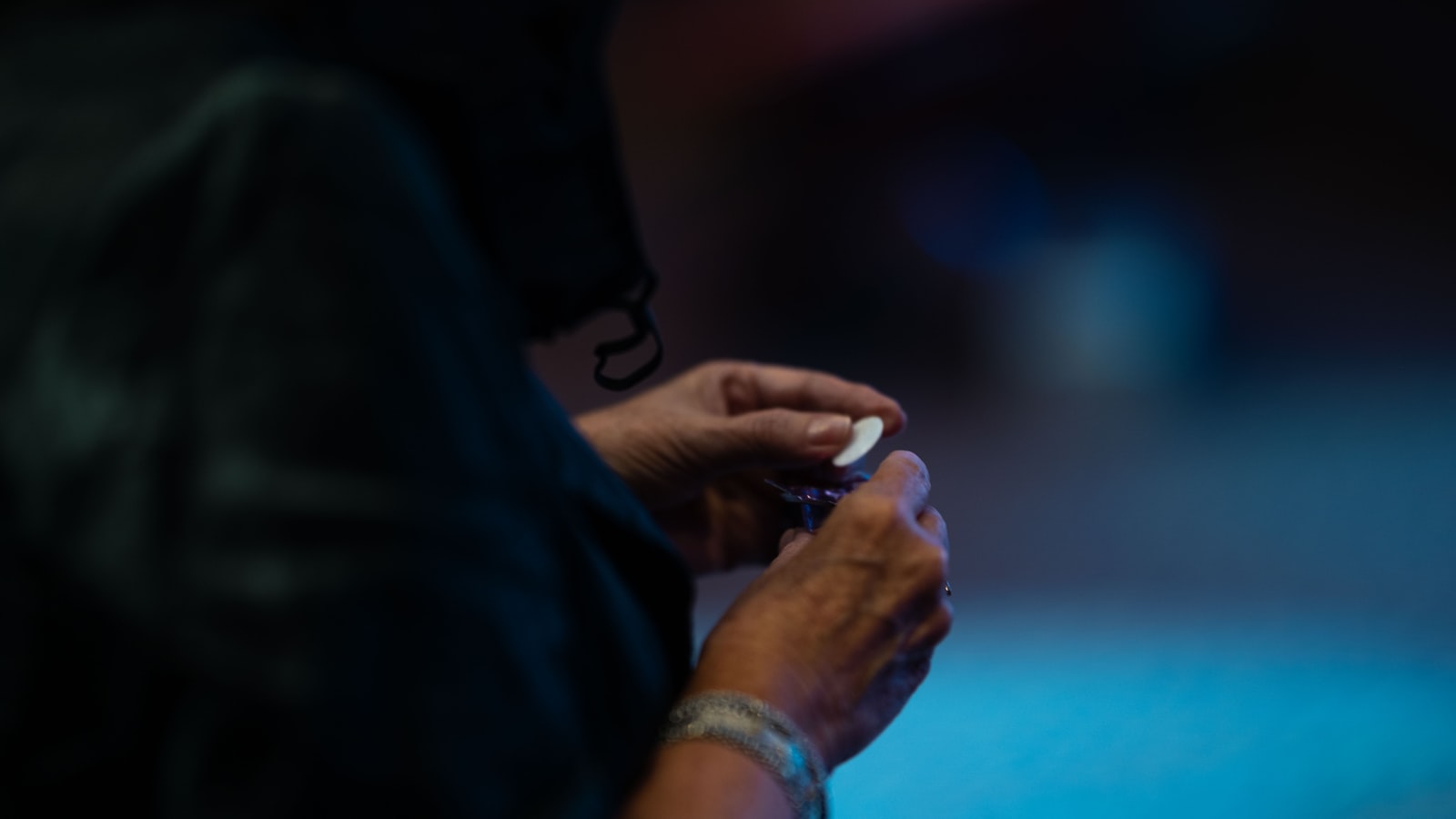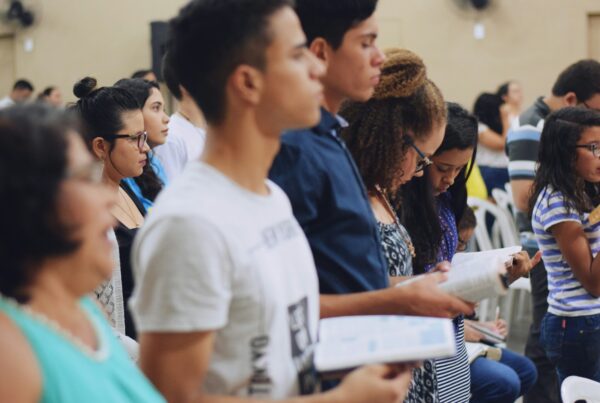These gluten-free communion guidelines have been lightly adapted for Faithward. They come from the RCA Commission for Christian Worship but could be used to guide an inclusive Lord’s Supper in a variety of contexts.
T he day before his death, Jesus commanded his disciples to get things ready for the Passover Meal.1 At that meal, Jesus instituted what we now celebrate in the Lord’s Supper, or communion.2 Preparations for this sacrament are an essential element for the feast. These preparations should consider the people in your church who endure a variety of food allergies, including gluten intolerance.
The real presence and real partaking of Christ is experienced in our simple actions: sharing food and drink, remembering Christ’s sacrifice, experiencing oneness in and with Christ, and renewing our hope in the promised kingdom of God.3 “It is in the act of eating and drinking that Christ feeds us with his presence through the power of the Holy Spirit.”4 The meaning of the sacrament and communion with Christ and others is more important than the physical elements.5 Because of this, wine may be grape juice, and bread does not necessarily have to be made out of wheat.
The Lord’s Table is where God meets the church in the person of Jesus Christ and sacramentally binds us together as the body of Christ. The following guidelines are provided to aid in communion preparations and to increase awareness and sensitivity to the need for full inclusion. Bread preparations that include options for people with gluten intolerance (or other allergies) ensure that all may join in the joyful feast of our Lord.
Approaches to providing gluten-free communion
Full inclusion
The best practice for full inclusion of all those with gluten intolerance is to provide only gluten-free elements at the Lord’s Table. People can have a variety of gluten-related health issues, including celiac disease, wheat allergy, and non-celiac gluten sensitivity (NCGS). These medically recognized intolerances and sensitivities have created a barrier to full communion in the body of Christ. Utilizing only gluten-free bread or wafers at the table ensures that all are welcome.
Practical guidelines
- Gluten-free communion requires thorough cleansing of the preparation area, the communionware, linens, and the utensils used for preparing communion.
- Those preparing communion must wash their hands thoroughly.6
- To avoid cross-contamination, wheat products must not be present.
Individual service
The individual service option addresses cross-contamination concerns by maintaining strict safety guidelines regarding the separation of gluten and gluten-free breads. Providing separate gluten-free stations or plates allows for the participation of all people at the table. While this may be a practical option for most congregations, it will call attention to people with gluten intolerance. Furthermore, this separates the congregation from sharing the common loaf.
Serving by intinction practical guidelines
- Have a separate gluten-free station using the practical guidelines for full inclusion (above). This station should include both the gluten-free option and the cup.
- Be clear when inviting worshipers to the table which station is gluten free.
Serving when trays and plates are passed practical guidelines
- Keep a separate plate only used for gluten-free bread that is prepared using the practical guidelines for full inclusion (above).
- Designate a server for the gluten-free option. This person should only handle the gluten-free plate.
- Be clear when inviting worshipers to the table which server has the gluten-free option and how worshipers should indicate they require gluten-free elements.
Service alongside
In some ministry contexts, it may be possible to serve communion with a gluten-free option alongside wheat-based bread. Providing a gluten-free option alongside can be done in a variety of ways depending on the traditions of the congregation. In serving alongside and allowing people to partake together, cross-contamination becomes a concern for people with severe intolerance. This option excludes these people from freely coming to the table.
Practical guidelines
- Gluten-free bread or wafers may be offered alongside their wheat equivalent.
- To limit cross-contamination, separately prepare gluten-free and wheat products.
- Gluten-free and wheat breads should be separated when transporting to the table and during the service. This may be two separate plates, a dish on a tray, or a napkin on a plate.
- If people are invited forward for intinction, the bread server may hold both options, allowing the individual to choose.
- Be clear when inviting worshipers to the table that elements are not free from cross-contamination.
Where to find gluten-free breads and wafers
Below are some options we’ve identified for purchasing gluten-free communion wafers or bread online. You could also search Google yourself for gluten-free bread or wafers near you (e.g., “gluten free bread near me”). Or ask people who regularly purchase gluten-free products for recommendations.
Bread/wafers only
Broadman Church Supplies Communion Bread
Each box contains 200 baked, ready-to-use gluten free squares packed in a resealable pouch.
Charistia Gluten-free Altar Bread
These wafers are a good option for Catholics who have gluten sensitivity or Celiac, as they have been approved for use in the Catholic Church.
Communion cup and bread combos
TrueVine Gluten-free Communion Cup and Wafer Set
These pre-filled chalices each have a serving of Concord grape juice and a gluten-free bread square.
World Communion Gluten-Free Communion Cup and Wafer Set
These pre-filled chalices each have a serving of Concord grape juice and a gluten-free bread square.
Things to consider when shopping for gluten-free communion bread or wafers
- Gluten-free bread or wafers used for communion should be labeled as: “no gluten,” “gluten-free,” “free of gluten,” or “without gluten.”7
- Local bakeries should ensure that the gluten-free bread was prepared separately from regular wheat breads and pastries.
- Gluten-free does not guarantee allergen free.
- Create an environment where people feel free to share their allergy concerns with the leadership of the congregation and with one another.8
Endnotes
- Matthew 27:17-19; Luke 22:7-13; Mark 14:12-16
- Matthew 27:26; Luke 22:19; Mark 14:22
- Belhar Confession, Clause 2; Belgic Confession, Article 35
- Gregg Mast, In Remembrance and Hope (Grand Rapids, Michigan: Wm. B. Eerdmans, 1998): 24.
- Heidelberg Catechism Q&A 79
- https://www.fsis.usda.gov/wps/portal/fsis/topics/food-safety-education/get-answers/food-safety-fact-sheets/safe-food-handling/keep-food-safe-food-safety-basics/ct_index
- https://www.fda.gov/food/food-labeling-nutrition/gluten-free-labeling-foods
- RCA Book of Church Order Chapter 1, Part I, Article 5, Section 3b (2021 edition, p. 22)



